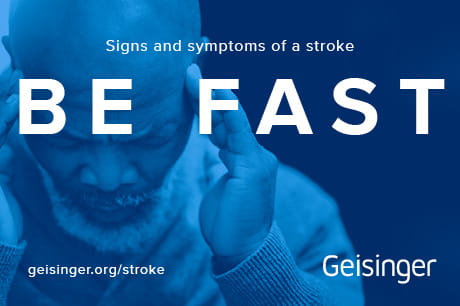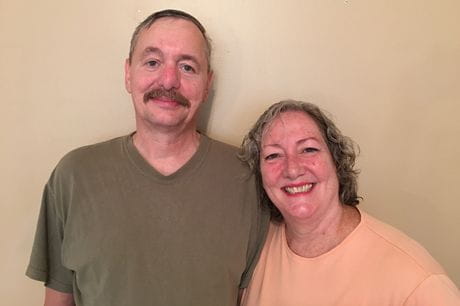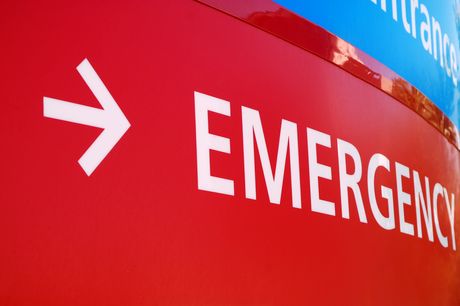Most Americans don't know the signs of a stroke. Do you?
Learn the BE FAST signs of stroke
We all know how serious and devastating a stroke can be. But would you be able to spot the signs if you or someone else was having one?
A whopping 75 percent of Americans under the age of 45 don’t know the signs and symptoms of a stroke. More alarming is that many report they may wait out the symptoms.
“Ignoring or waiting out the symptoms of a brain episode can have fatal consequences,” said Margy Kester, stroke coordinator at Geisinger Community Medical Center in Scranton. “The reason it’s so important to know the signs of a stroke is that can help you identify if someone is having one and get them successfully treated.”
The first hour after an individual begins experiencing symptoms of a stroke, a.k.a. the “golden window,” is the period when doctors are more successful in minimizing or reversing damage by restoring blood flow to the brain. For some stroke victims, treatment is now available for up to 24 hours after stroke symptoms start.
“Leaving a stroke untreated or delaying treatment can lead to death or permanent disability,” said Kester.
Here are the signs and symptoms that signal you or someone else may be suffering a stroke.
- Sudden weakness or numbness in your face, arm, or leg on one side of your body
- Abrupt loss of vision, coordination, strength, speech, sensation, or the ability to understand speech
- Sudden loss of balance
- Vomiting, nausea, fever, hiccups or trouble swallowing
- Sudden vision dimness, especially in one eye
- Sudden and severe headache with no apparent cause, followed by rapid loss of consciousness
- Sudden falls or unexplained dizziness
“All of those symptoms may be difficult to remember, which may explain why so many Americans report not knowing the signs of a stroke,” said Kester. “Instead of remembering a whole list of symptoms, think of the acronym BE FAST.”
BE FAST stands for:
-
Balance difficulties
-
Eyesight changes
- Face drooping
- Arm weakness
- Speech difficulty
- Time to call 911
If one arm is weak or numb, it’s another sign of a potential stroke. If you suspect someone is having a stroke, ask them to raise both arms to see if one arm drifts down.
“Another telltale sign of a stroke is slurred speech – is the person unable to speak or hard to understand? Ask them to repeat a simple sentence to tell if their speech is affected,” said Kester.
And if you see any of these symptoms, the “T” in BE FAST becomes imperative.
“If someone is experiencing any of these symptoms, even if they seem to go away, call 9-1-1 immediately,” said Kester. “Getting to the hospital right away is crucial in preventing serious disability or death.”





